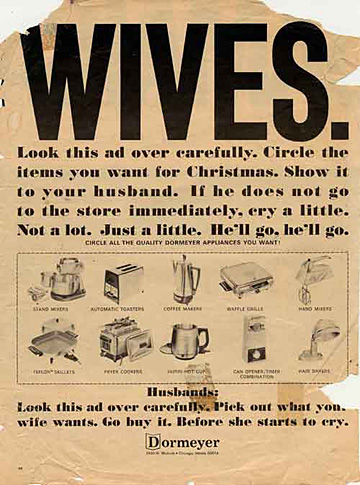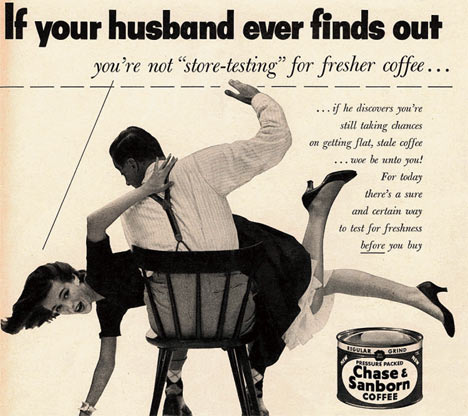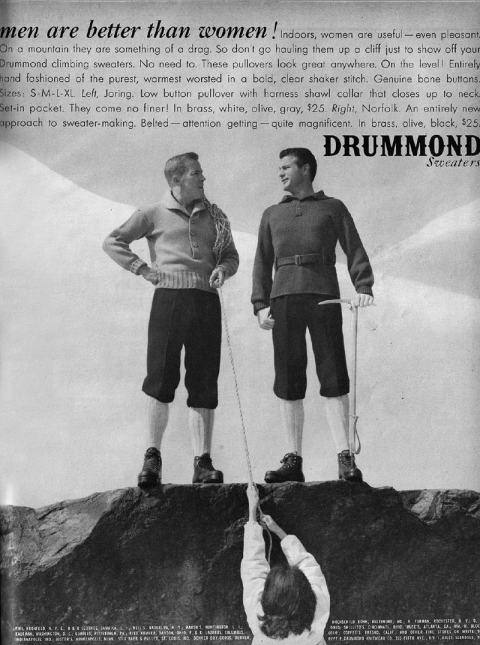-
Recent Posts
Recent Comments
- y8 happy wheels on 1950s Ads/commercials aimed at Women
- gorzow nieruchomosci on 19th century Household Technology
- When it comes to personal loans USA | 7N4ctwqy on Pros vs Cons of Gay Marriage
- idaho virtual office on Experience of Surrogacy
- Gansu, said construction lax control caused the day of a highspeed 31 kilo | www.louboutinpascher1221magasin.frkalF on Surrogacy in India
Frequent Topics
- 20th century
- 1950s
- Adolescents
- american dream
- anonymous
- birth
- census 2011
- childhood obesity
- children
- children under 2
- chores
- Christian fundamentalist
- commercial
- consumerism
- eugenics
- Family
- female targets
- Foucault
- gay
- Gay Marriage
- guest workers
- home economics
- homosexuality
- Homosexual Warning
- household roles
- Immigrants Hope Their 'American Dream' Isn't Fading
- kitchen
- majority not white
- marketing
- Media & Advertising
- minorities
- motherhood
- New York Times
- privacy
- Pros vs Cons of Gay Marriage
- school
- segmented marketing
- Slavery
- Social Media
- social network
- surrogacy
- television
- us population
- women
Archives
Categories
Meta
Author Archives: iselva.alcantara
Posts: 5 (archived below)
Comments: 0
March Against SAME-Sex Marriages
Ever since the legalization of Gay Marriage in New York we have mostly heard in the city much talks about its approval and who and where they got married. I’ve decided to look for some news related to the other side that is against same sex marriage. Most of it has been obscured largely due to the large proportion of same sex marriages advocates in New York City. Searching through Google I found a myriad of organizations whose main objective is to “protect the institution of marriage”. I knew there were already groups as such but I felt like I actually wanted to find out if there were other reasons, apart from religion/children, that people oppose this. I unfortunately did not find anything worth discussing. Most of these groups are largely built around the same rhetoric; the opposition by “God”.
The article I found was on the Huffington Post of a march that took place on the same day gay marriage was legalized. It was led by a notable senator, Ruben Diaz; who is one of the main Democrats denouncing gay marriage. I’ve included a video of the event. Thanks God, Diaz comes out in the end and I don’t have to hear his obnoxious voice.
I thought it would be nice to give you all an example of what these anti-gay marriage commercials look like. The second video . I’ve included is by an association known as the National Organization for Marriage. This video presents a couple of people who speak about some “storm and dark clouds” coming and how supporting same sex marriages will impede on their “freedom” with other examples on how it can negatively affect us all; quite apocalyptic. What’s even worst is that some of these commercial are quite alarming, in the sense that they try to incite a non-existent fear.
What I came to realize is that none of them provide good arguments that can be somewhat at level with the pro-same sex marriage arguments. Many sites I came upon posted scripture. I wish that most of them weren’t centered on religious reasons and they can somewhat include other people that don’t hold their “faith” to such standards.
1 baby – 8 Mothers
I came upon an article of January of this year. Since we discussed home economics in class, I thought this might apply. Unlike the Amy Sue Bix article, whose focus was on the equipment program under home economics, this relates more to the branch of child development. This article came from ABC news and it is called “Practice Babies’: 1 Orphan Raised by 8 Mothers”. In the time when home economics was becoming quite popular and many women were attending colleges who offered degrees in this field, Cornell University was one of them. Surprisingly enough Ivy League Cornell offered the Home Economics degree, tuition free for these women. In 1919 as the final project for graduation for these women they initiated a program called the “practice baby program”. This required 8 women, up to 12, to care for a baby in an apartment. Then after 6 weeks the baby would be passed on two another set of women for up to 2 years, when finally they would be adopted. For those 6 weeks they care for the child 24 hours a day/ 7 days a week, along with other household chores part of their curriculum. They mention that one of these women might put the baby down for a nap to be later picked up by another woman. These babies were offered by the welfare program (loaned by orphanages) for the benefit of “science”.
 The babies were anonymous since they were infants, but they were all branded with the name Denny Domecon (surname: domestic economy). After leaving the child would have no contact with the multiple caregivers or vice versa. According to Keating, an archivist at Cornell:
The babies were anonymous since they were infants, but they were all branded with the name Denny Domecon (surname: domestic economy). After leaving the child would have no contact with the multiple caregivers or vice versa. According to Keating, an archivist at Cornell:
“The program was an early testing-ground for consumer research, a “gateway for early education for a different group of women who were so well educated”
The program was later dropped in 1969 when new research pushed society into the benefits of having a primary caregiver. But that wasn’t before Life magazine ran an article in 1952 glorifying the program. The apartments were later used as day care center. I’ve included a video of one of these women caregivers who got their degree in Home Economics from Cornell in 1925. Also a picture of the article from Life (“The Making of a Home: Cornell Girls Study for Their Big Job.”) Both of these women are the same person.
Posted in Assignment 4
Tagged 1950s, 20th century, children, consumerism, home economics, household roles, motherhood, women
3 Comments
19th century Household Technology
Searching through Google I found a video relating to household technology of the mid 19th century. This mini documentary comes from the Library of Congress titled “The History of Household Technology”. I, like most of you know that life for these women during this period wasn’t easy. Household work would take all day and it was arduous work. I have never been so grateful for the advancements in household technology until now. The video portrays some innovations regarding laundry, ironing and the stove. Today these chores have become so efficient regarding time, we often forget that each of these activities took a day each back in the 19th century. In the documentary they mention some excerpts of reading materials provided to housewife by other housewives. These were advices and tips on how to become a better housewife.
It is quite interesting on how these women first started doing laundry by hand and then decades later, trying to find easier, less strenuous ways to do these chores, technological innovations came up with a product that resembles a washing machine.
Even the clothes iron was something to dread, due to its weight and its capability to burn your hand or even worst explode.
This reminds me a great deal of how  many of the authors of the readings we do for class, make the argument that all these technological innovations although great have did not take the women out of the kitchen. I agree with them but at the same time it is hard to not grasp the importance of how much these innovations have diminish the laborious work endured by the women of the 19th century. It is interesting to note that these women did think their work was difficult and at the same time the network of housewives around them served as motivation to continue working hard everyday. I also was a little bit curious on how they manage to do the chores like cooking,cleaning and taking care of the children,all daily activities if each of these took a day. I concluded that they had to have had help from their children and servants.
many of the authors of the readings we do for class, make the argument that all these technological innovations although great have did not take the women out of the kitchen. I agree with them but at the same time it is hard to not grasp the importance of how much these innovations have diminish the laborious work endured by the women of the 19th century. It is interesting to note that these women did think their work was difficult and at the same time the network of housewives around them served as motivation to continue working hard everyday. I also was a little bit curious on how they manage to do the chores like cooking,cleaning and taking care of the children,all daily activities if each of these took a day. I concluded that they had to have had help from their children and servants.
1950s Ads/commercials aimed at Women
In the 1950s women were the primary consumers; the ones who made decisions on what was needed at home. Therefore I was curious on how did the market researchers of the 1950s and 1960s market products to women. The first one is a commercial for a refrigerator from the 1950s made by the company Kelvinator Refrigerator. It reminded me of the “more is better” state of mind during this period. For everyone who sees it, please note the amount of food in that refrigerator (LOL). It made me wonder how many people lived in this home during this time.
Apart from finding the conventional cheerful ads from these times, I did encounter some that were not so jolly but quite sexist. Coming from a post-feminist perspective I thought they were quite hilarious. But I think it is interesting that albeit the sexist remarks projected by the ads, these women still bought the products marketed to them. Even if it continued to reaffirm the stereotypes of women during these decades. Most of the advertisement I came by during this period were either made for white women/wives/mothers and white families. But looking ahead in the late 1960s, I did see the transition into market segmentation. More ads were aimed at African Americans than before. What follows were ads marketing to women in the 1950s:






I particularly enjoy the last one because during these time researchers were also understanding that women were not the only ones they should market to; but men also.
“Was I a child abuser? Did I leave my children alone and go out to a bar? Was I on crack? “
While doing research on what does it mean to be an “unfit mother”, I came upon an article on the New York Times, called “Losing Custody of My Hope”. I always thought this term to be quite subjective, but at the same time I believe there are some highly indisputable reasons you might think someone is “unfit”. For example, a mother who is a drug addict,  or physically or sexually abuses their children would be considered in most people’s eyes as unfit.
or physically or sexually abuses their children would be considered in most people’s eyes as unfit.
This article is written by a woman who tells her story as a divorce woman force into a custodial battle for her 3 children by her ex-husband. According to the ex-husband, she was unfit and sued her for full custody of their children. As you read more into the case, you realize that they ex-husband’s grounds for such allegations are unfounded. Both were subjected to various exams/license procedures to try to prove who can be the better parent. I was very surprised to see that he was able to make such accusations and still tell her that he didn’t feel like she was a “bad mother per se” but feels like he can be a better “primary caregiver”. It is stated in the article that he didn’t spend enough time with his children when they were still together due to his career as a civil engineer. I’m a little taken aback because although it is not stated I feel like what evidence he had to support this claim when he went to the courts. What made him underestimate her motherhood and overestimate his job as a father? How do courts evaluate “unfit”? Part of my problem is that in a country with a myriad of cultures, can one prevent favoring one set of qualities provided by one culture, over the others.


